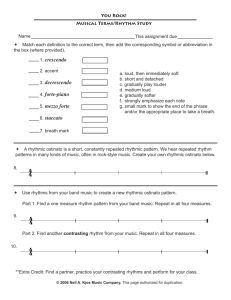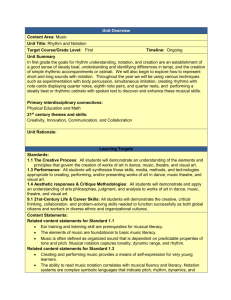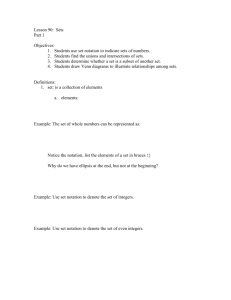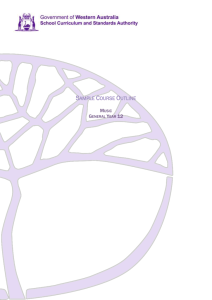Year 7 Music
advertisement
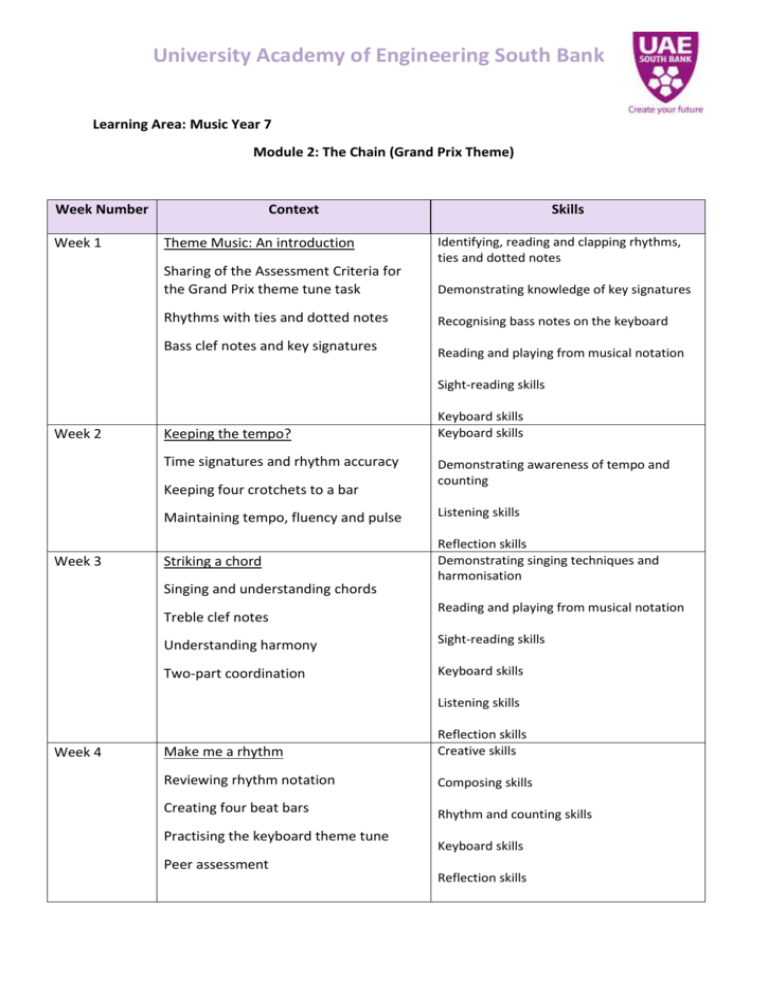
University Academy of Engineering South Bank Learning Area: Music Year 7 Module 2: The Chain (Grand Prix Theme) Week Number Week 1 Context Theme Music: An introduction Sharing of the Assessment Criteria for the Grand Prix theme tune task Rhythms with ties and dotted notes Bass clef notes and key signatures Skills Identifying, reading and clapping rhythms, ties and dotted notes Demonstrating knowledge of key signatures Recognising bass notes on the keyboard Reading and playing from musical notation Sight-reading skills Week 2 Keeping the tempo? Time signatures and rhythm accuracy Keeping four crotchets to a bar Week 3 Keyboard skills Keyboard skills Demonstrating awareness of tempo and counting Maintaining tempo, fluency and pulse Listening skills Striking a chord Reflection skills Demonstrating singing techniques and harmonisation Singing and understanding chords Treble clef notes Reading and playing from musical notation Understanding harmony Sight-reading skills Two-part coordination Keyboard skills Listening skills Week 4 Make me a rhythm Reflection skills Creative skills Reviewing rhythm notation Composing skills Creating four beat bars Rhythm and counting skills Practising the keyboard theme tune Peer assessment Keyboard skills Reflection skills University Academy of Engineering South Bank Week 5 Feeling the rhythm? Reviewing rhythm notation Reading and writing rhythms, including syncopated ones Practising the keyboard theme tune Sight-reading skills Keyboard skills Performance skills Reflection skills Overview of notation and theory knowledge in preparation for next week Week 6 Ready? Theory skills Revision session Keyboard skills Written rhythm theory quiz Performance skills Final assessments of the Grand Prix Theme Week 7 Show Me! Theory skills Evaluation of module and tests Reflection skills Final rehearsal of keyboard playing Performance skills Class concert Presentation skills University Academy of Engineering South Bank Music Year 7 Module 2: The Chain (Grand Prix Theme) Assessment Criteria Level Performing Theory Rhythm Notation Reflection 7 I understand rhythm and can include syncopation or independent rhythms between hands in my performance. I can show understanding of chords and melodies and how they work together. I know how chords are put together and I can play a chord sequence fluently in root position. I can demonstrate good coordination on an instrument. I have a good understanding of treble clef notation including some dynamics. I can combine syncopated rhythms and rests to create a bar in 4/4 time. I can evaluate how my outcomes may be affected by the context, and adjust this accordingly. I plan in time for developing and improving my work. I have a reasonable grasp of treble clef notation and some other score markings such as dynamics. I have a basic understanding of notation and I can follow a simple scored melody. I can combine varying rhythmic symbols and rests to create a bar in 4/4 time. I can evaluate the success of my work and set realistic targets for refinement. I can start to combine different rhythmic symbols to create a bar in 4/4 time. I can consider successful/non-successful outcomes and improve my own and others’ work. I can recognise rhythmic musical symbols (crotchet, minim, quaver and their equivalent rests.) I can recognise basic music symbols (treble clef, stave, bar line etc.) I can recognise how to use one or two rhythmic symbols to create a bar in 4/4 time. I can suggest improvements to mine and others’ work. I can recognise the notes lengths of rhythmic symbols. I can identify what needs to be improved in my work. 6 5 4 3 I can demonstrate some coordination on an instrument.
